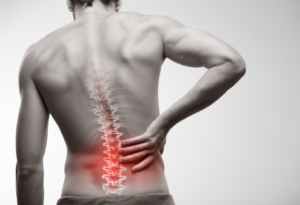It has been suspected for quite some time, but lately investigative journalists have been objectifying the issue with ethical clarity. For the most part, it seems, the “Back Pain Industry” is a scam. It is not only a “misty scam” with no solid evidence to offer  definitive treatments or relief, but other segments of the healthcare industry, from chiropractic, to orthopedic clinics to the pill pushing of the pharmaceutical industry.
definitive treatments or relief, but other segments of the healthcare industry, from chiropractic, to orthopedic clinics to the pill pushing of the pharmaceutical industry.
Investigative reporter and journalist Cathryn Jakobson Ramin recently wrote a book entitled: “Crooked: Outwitting the Back-Pain Industry and Getting on the Road to Recover.” A back-pain sufferer herself, the author conducted more than 600 interviews with healthcare professionals and patients. She has uncovered a frightening pattern of unethical behavior. Even if only half of it is true, it is still frightening and needs to be examined by the medical associations with in-depth scrutiny and more so, with honesty.
There are more than 60 million Americans who claim to be suffering from back-pain. The industry that has been created around these sufferers rakes in more than $100 billion per year. Here is the scary part of the author’s conclusions based on extensive interviews: most treatments and therapies are ineffective and sometimes even dangerous.
Like or hate Ramin’s conclusions, here are some of her findings:
- Regarding chiropractic care, there is some proof that if you go into an office with back-pain, one or two adjustments may actually help. That is the good news. However, chiropractors will want you to return for a long time, seeing them for many sessions. There exists no evidence that long-term treatment will do anymore for patients than one or two sessions.
- Interviews with spine surgeons was even more frightening. When Cathryn Jakobson Ramin questioned 100, board certified spine surgeons, by asking, “Would you have spine surgery for back pain?” 99 out of 100 surgeons said “No!” For the sake of absolute transparency, she asked about lumbar fusion and disc replacement surgery.
- Opioids and Back Pain. Not too surprising, there is an unholy alliance between the pharmaceutical industry and back pain. Despite the fact that more than 180,000 Americans have died from opioid pharmaceuticals in the past 15 years, they keep getting prescribed for back pain. At present, there are at least two million Americans dependent on opioids, with no sign of letting up. The negative findings regarding the usefulness (or non-usefulness) of opioids was underscored by a 2016 study by the University of Colorado-Boulder. It was found that even short-term exposure to opioids actually increased pain.
The inescapable conclusion of this detailed book is that back pain, by and large, is a matter of “patient, heal thyself.” The best way to defeat back pain is exercise.
Back-Pain – Why then?
As I mentioned earlier, suppose if even half of this report is true? Why then, wouldn’t the healthcare industry aggressively pursue the findings? It comes down as it always does to opportunity, need and rationalization.
Many Americans lack the will to exercise, they have allowed themselves to become obese and when they develop back pain they seek pharmaceutical, chiropractic or surgical solutions rather than more common-sense approaches. All too often, the healthcare community understands this issue and they seize the opportunity to cash in on the need people have to relieve their pain. No, I do not dismiss the fact that there are legitimate back pain sufferers, only to appreciate that based on recent studies that there are solutions far simpler than meds or surgery.
While it is true that some healthcare professionals rationalize the way they address the back pain of their patients, be it as benign as unneeded MRI’s or spinal manipulation, all the way up to spinal fusion, what is not explored enough is diet and exercise. Is it unethical to avoid the idea that many patients can heal themselves? Unfortunately, it would appear there is little money in honesty.
In her book, Ramin stresses that many doctors and therapists in the back pain industry will lead you to therapeutic dead ends. She states:
Before you decide to put your faith in any provider, look extremely closely at that provider’s record. If you get sent for an MRI a couple of days after back pain with no intention of having surgery, ask why you are going for that MRI, because the only use for an MRI is for preparation for either surgery or an epidural steroid injection.
Consequently, what helped Ramin defeat her chronic back pain was “intensive, directed exercise.” She discovered that therapists dole out lots of misinformation, which makes it difficult for sufferers to find out what works. But, according to Ramin, it will be up to you to fix your back pain, and no one else.
The bad news here, or maybe it’s good news, is that you are not going to find someone who will fix you. You will be the fixer. You will be the one who develops the intensive exercise program that is going to allow you to escape from this.
YOUR COMMENTS ARE WELCOME!


